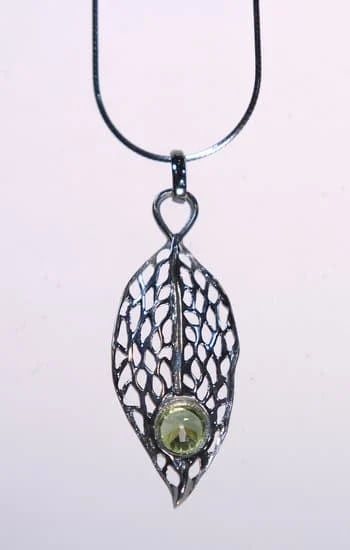What is a normal overhead rate for handmade jewelry? Understanding the costs associated with running a handmade jewelry business is crucial for its success. From rent and utilities to marketing and packaging, overhead costs can significantly impact the profitability of the business. In this article, we will dive into the intricacies of overhead rates in the handmade jewelry industry, explore the factors that affect these rates, and provide insights into calculating and managing overhead costs.
The overhead rate for handmade jewelry is an essential metric that helps businesses determine how much they need to charge for their products in order to cover their expenses and make a profit. This article will delve into the various factors that contribute to determining a normal overhead rate for handmade jewelry, including rent, utilities, labor costs, materials, and administrative expenses. Understanding these factors is vital for setting competitive prices without sacrificing profitability.
Furthermore, we will examine industry standards for overhead rates in the handmade jewelry business. By benchmarking against other successful businesses in the industry, entrepreneurs can gain valuable insights into what constitutes a competitive overhead rate. Additionally, we will provide strategies for managing overhead costs effectively, offering practical tips for reducing expenses without compromising on product quality or customer experience.
Factors Affecting Overhead Rates in Handmade Jewelry
When it comes to determining the overhead rate for a handmade jewelry business, there are several factors that come into play. Understanding these factors is essential for setting a competitive and sustainable overhead rate.
Here are some key factors that can affect the overhead rates in handmade jewelry businesses:
- Labor Costs: The cost of labor plays a significant role in determining the overhead rate for handmade jewelry. This includes wages for jewelry makers, as well as any additional staff involved in the production process.
- Material Costs: The cost of materials used to create handmade jewelry, such as precious metals, gemstones, and other supplies, directly impacts the overhead rate. Fluctuations in material costs can have a substantial effect on overall overhead expenses.
- Production Volume: The volume of jewelry produced can impact overhead rates. Higher production volumes may allow for economies of scale and lower per-unit overhead costs.
- Rent and Utilities: Overhead rates are also influenced by fixed expenses such as rent, utilities, and insurance for the production space and storefront if applicable.
Understanding these factors allows handmade jewelry business owners to calculate their overhead rates accurately and make informed decisions about pricing and cost management.
In addition to these factors, it’s important to consider the overall operational efficiency and profitability goals of the business when setting an appropriate overhead rate. When managed effectively, these factors can contribute to a sustainable and competitive overhead rate for a handmade jewelry business.
Industry Standards for Overhead Rates in Handmade Jewelry
When it comes to establishing an overhead rate for a handmade jewelry business, it is important to understand the industry standards that can serve as a guide. The overhead rate is the percentage of costs not directly attributable to the production of goods. This includes expenses such as rent, utilities, salaries, and other operational costs. Understanding the typical overhead rates in the handmade jewelry industry can help jewelry makers make informed decisions about pricing and financial planning.
Typical Overhead Rates for Handmade Jewelry Businesses
In the handmade jewelry industry, the typical overhead rate can range from 20% to 40% of total production costs. However, this can vary depending on several factors such as location, size of the business, and production methods. Jewelry makers who operate on a larger scale may have lower overhead rates due to economies of scale, while smaller artisans often face higher overhead rates.
Factors Influencing Overhead Rates in Handmade Jewelry Business
Several factors can influence the overhead rates in a handmade jewelry business. Location plays a significant role as businesses situated in areas with high rent and living costs may have higher overhead rates compared to those located in more affordable areas.
Additionally, the materials used in creating jewelry, labor costs, and marketing expenses are also important factors that contribute to determining the overall overhead rate for a handmade jewelry business. It’s important for entrepreneurs in this industry to carefully consider these factors when establishing their own overhead rates.
Comparison With Other Industries
It is also valuable for handmade jewelry businesses to compare their overhead rates with other industries within the retail or fashion sector. This can provide insights into whether their current operating costs are within industry norms or if there are opportunities to optimize expenses without sacrificing quality or customer service.
Understanding how their business compares to others can offer valuable benchmarks for setting competitive and sustainable overhead rates. Ultimately, having an understanding of industry standards for overhead rates can empower handmade jewelry business owners to make informed decisions about financial management and pricing strategies.
Calculating Overhead Rate for Handmade Jewelry
When it comes to determining the overhead rate for your handmade jewelry business, it is important to take into consideration all the indirect costs that go into producing and selling your products. Overhead costs typically include rent, utilities, insurance, supplies, and other expenses not directly related to the production of your jewelry. Calculating the overhead rate can be a complex process, but it is essential for setting prices that will ensure profitability.
To calculate the overhead rate for your handmade jewelry business, you will need to add up all your indirect expenses over a certain period of time, such as a month or a year. Once you have the total overhead costs, you can divide this figure by the total direct labor hours or direct labor cost associated with producing your jewelry.
This will give you an overhead rate that represents the portion of indirect expenses attributed to each unit of jewelry produced.
It is important to regularly review and recalculate your overhead rate, as it can fluctuate based on changes in expenses or production volume. By understanding how to accurately calculate your overhead rate, you can ensure that your pricing strategy takes into account all the necessary costs and allows for a reasonable profit margin. This knowledge will also help you make informed decisions about managing and reducing overhead costs in your handmade jewelry business.
Strategies for Managing Overhead Costs in Handmade Jewelry Business
When it comes to running a handmade jewelry business, managing overhead costs is crucial for maintaining profitability. Overhead costs refer to the ongoing expenses of operating a business that are not directly tied to production, such as rent, utilities, insurance, and administrative expenses. In the context of a handmade jewelry business, these costs can significantly impact the overall financial health of the enterprise.
One strategy for managing overhead costs in a handmade jewelry business is to carefully analyze and track all expenses. This involves keeping detailed records of all expenditures related to running the business, including both fixed costs like rent and variable costs like materials and supplies. By understanding where the money is being spent, it becomes easier to identify areas where cost-saving measures can be implemented.
Another important strategy is to constantly seek opportunities for cost reduction without sacrificing quality. This can include negotiating better deals with suppliers, finding more affordable alternatives for materials, or streamlining operations to minimize wastage and inefficiencies. By actively seeking ways to trim overhead costs, a handmade jewelry business can improve its bottom line without compromising its products.
Lastly, investing in technology and automation can also help manage overhead costs in a handmade jewelry business. Implementing software systems for inventory management, sales tracking, and customer relationship management can streamline operations and reduce the need for manual labor, thereby lowering administrative expenses.
| Cost-Savings Strategy | Impact on Overhead Costs |
|---|---|
| Negotiating better deals with suppliers | Reduction in material costs |
| Implementing inventory management software | Lowered administrative expenses through automation |
Impact of Overhead Rates on Pricing of Handmade Jewelry
When it comes to pricing handmade jewelry, overhead rates play a crucial role in determining the final cost of the products. The overhead rate is the percentage of indirect costs that are allocated to each product, and it directly influences the pricing strategy of a handmade jewelry business. Understanding how overhead rates impact pricing is essential for maintaining profitability while remaining competitive in the market.
The following are some ways in which overhead rates impact the pricing of handmade jewelry:
1. Cost allocation: Overhead rates determine how much of the indirect costs, such as rent, utilities, and equipment maintenance, are attributed to each piece of jewelry. This directly affects the overall cost of production and therefore impacts the pricing strategy.
2. Profit margins: Setting an appropriate overhead rate is crucial for ensuring sufficient profit margins on each product sold. A higher overhead rate may result in inflated prices that deter customers, while a lower rate could lead to financial losses for the business.
3. Competitiveness: The overhead rate also affects how competitive a handmade jewelry business can be in the market. Pricing that is too high due to high overhead rates may drive customers to seek more affordable options from competitors.
To better understand how overhead rates affect pricing strategies for handmade jewelry businesses, it is important to consider industry standards and benchmarks for setting competitive rates.
Industry standards provide guidelines on what is a normal overhead rate for handmade jewelry businesses. These standards take into account various factors such as manufacturing processes, materials used, and size of operations. By comparing their own overhead rates to industry benchmarks, handmade jewelry businesses can ensure that their pricing remains competitive while covering all necessary costs.
Overall, understanding how overhead rates impact pricing helps handmade jewelry businesses make informed decisions when setting their prices and staying competitive in the market. By carefully calculating and managing their overhead costs, these businesses can maintain profitability without compromising on quality or competitiveness.
Case Studies
Example 1: Bella’s Beads
Bella’s Beads is a thriving handmade jewelry business that has been able to maintain a low overhead rate of 15% through strategic planning and cost management. The founder, Bella Smith, emphasizes the importance of efficient inventory management and minimizing unnecessary expenses in order to keep overhead costs down. By keeping a close eye on operational expenses and finding creative ways to reduce waste, Bella’s Beads has been able to achieve a competitive overhead rate within the industry.
Example 2: Artisanal Gems Co.
On the other hand, Artisanal Gems Co. operates with a slightly higher overhead rate of 20%. However, this higher rate is attributed to the company’s investment in premium materials and specialized craftsmanship.
Founder Sarah Johnson believes that quality should never be compromised, even if it means operating with a higher overhead rate compared to other businesses in the industry. Despite the higher overhead rate, Artisanal Gems Co. has been able to attract a loyal customer base that values the superior quality of their handmade jewelry.
Example 3: Vintage Trinkets Boutique
Vintage Trinkets Boutique boasts an impressively low overhead rate of 12%, which can be mainly attributed to their efficient use of space and resources. By utilizing cost-effective marketing strategies and maximizing their production workflow, this boutique has managed to keep their overhead costs at a minimum while still delivering unique and high-quality handmade jewelry pieces.
These case studies highlight the diverse approaches taken by successful handmade jewelry businesses in managing their overhead rates. Each business demonstrates how different strategies can lead to varying overhead rates while still achieving success in the industry.
Tips for Setting a Competitive Overhead Rate for Handmade Jewelry Business
In conclusion, determining a normal overhead rate for handmade jewelry business involves an understanding of the various costs involved in running the business. Factors such as rent, utilities, equipment, and labor all contribute to the overhead costs that need to be accounted for when setting the overhead rate. It is important to consider industry standards and benchmarks in order to set a competitive overhead rate that allows for profitability while remaining attractive to customers.
Calculating the overhead rate for a handmade jewelry business involves careful consideration of all expenses and allocating them accordingly. By keeping a close eye on these costs and implementing strategies for managing them effectively, businesses can ensure their overhead rates are in line with industry norms and can ultimately lead to sustainable growth.
By studying case studies of successful handmade jewelry businesses and learning from their experiences with setting competitive overhead rates, new and existing businesses can gain valuable insights into how they can manage their costs effectively. In doing so, they can ensure that their pricing remains competitive while also allowing for profitability in the long run. Therefore, it is essential to continuously review and adjust the overhead rate as necessary to maintain a healthy balance between cost management and business success.
Frequently Asked Questions
What Is the Average Markup for Handmade Jewelry?
The average markup for handmade jewelry can vary depending on factors such as materials used, labor costs, and market demand. Generally, a typical markup for handmade jewelry can range from 2 to 4 times the production cost.
What Is the Markup on Designer Jewelry?
The markup on designer jewelry tends to be higher compared to handmade or mass-produced pieces. For designer jewelry, the markup can range from 5 to 10 times the production cost. This is due to the brand name, exclusivity, and craftsmanship associated with designer jewelry.
What Is a Good Profit Margin for Handmade Items?
A good profit margin for handmade items is typically around 50% or more. This means that the selling price should be at least double the production cost in order to cover expenses and generate a healthy profit. However, profit margins can vary depending on the specific product and market conditions.

Welcome to my jewelry blog! My name is Sarah and I am the owner of this blog.
I love making jewelry and sharing my creations with others.
So whether you’re someone who loves wearing jewelry yourself or simply enjoys learning about it, be sure to check out my blog for insightful posts on everything related to this exciting topic!





